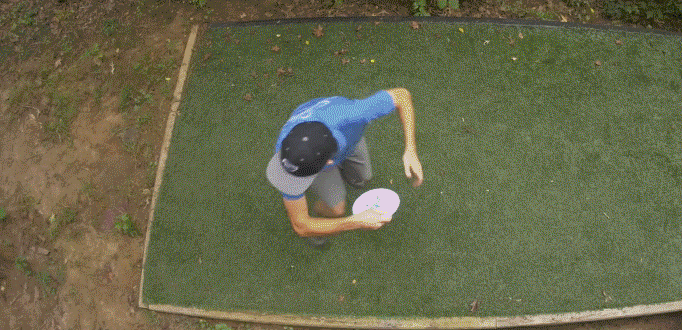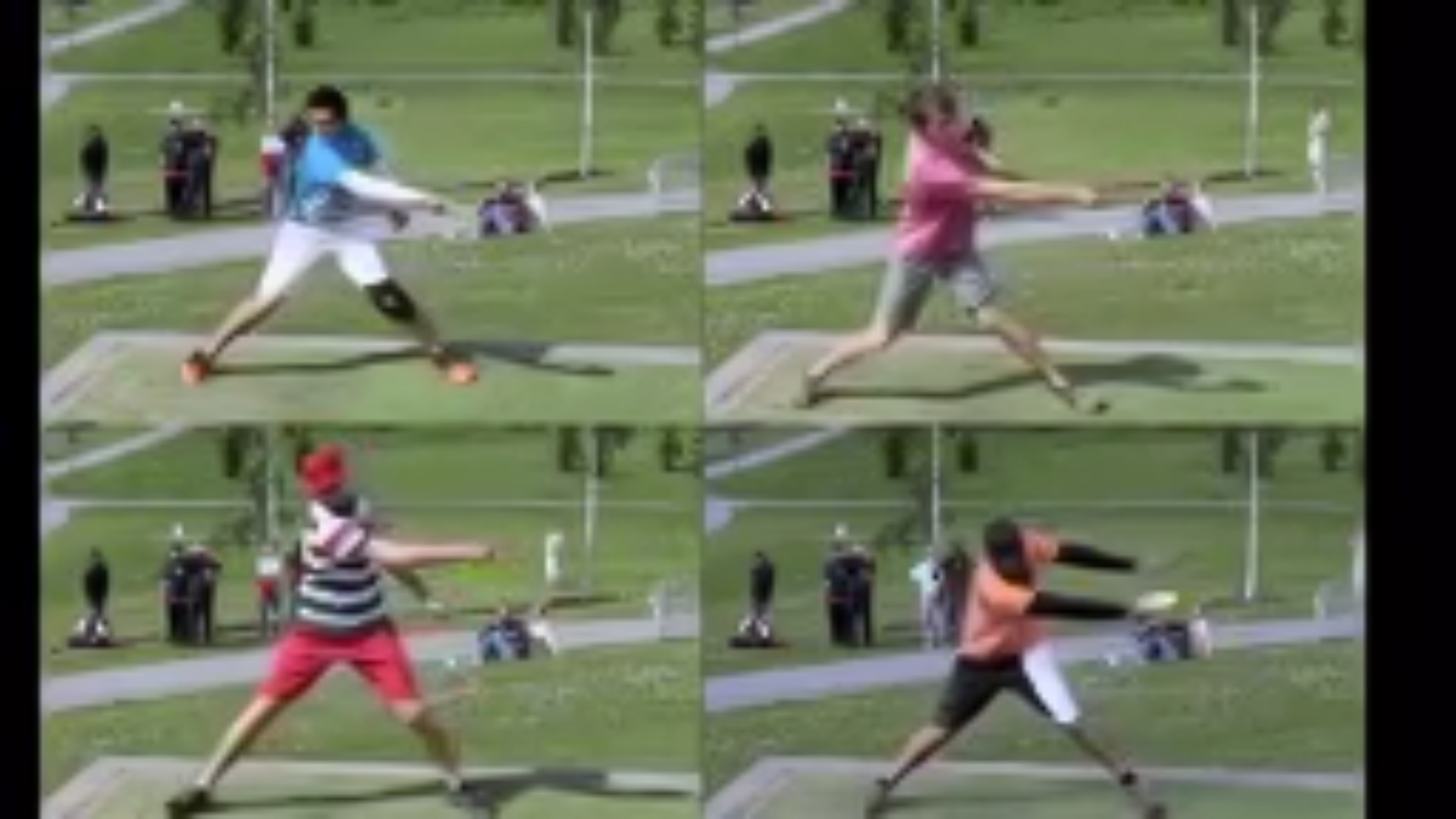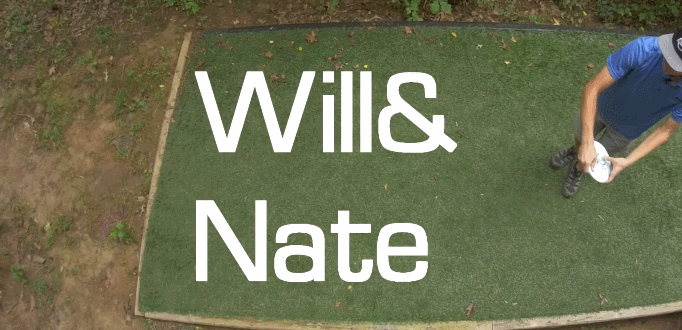Your hips and pelvis are two different things (actually three).
-
Discover new ways to elevate your game with the updated DGCourseReview app!
It's entirely free and enhanced with features shaped by user feedback to ensure your best experience on the course. (App Store or Google Play)
You are using an out of date browser. It may not display this or other websites correctly.
You should upgrade or use an alternative browser.
You should upgrade or use an alternative browser.
New Feldberg clinic
- Thread starter 1hicat
- Start date
I've seen the term "clearing the hip" used numerous times in this forum. What exactly does this mean?
Basically, you should open the lead hip so that your torso can rotate and follow through without restriction.
billyjacko
Eagle Member
I

This is one of the best visualizations of "shifting from behind". Will's push is directly in line with the trajectory of his shot, which pushes to the right of his plant foot's location.
That gif is great, You got some sauce with that? I can't really tell on mobile, but it seems like the gif cuts out a moment before the heel comes down (weight completely shifted.) This is something that's been very much on my mind, but is the gas pedal/push off the rear foot started with an activation of rear hip? I mean, do you consciously turn the femur in to allow room to push the weight targetward off the instep? It's something I've noticed watching different pros off arm techniques, which I think is the most unique part of pros throwing style. The common factor I've noticed is that when the hand starts moving in (elbow to hip), the femur begins to rotate. I think Feldberg is a great example of this as you can watch his straight arm mirrors the movement of the rear femur.
Potato quality screen shot of lead card just before crushed can and after rear arm begins moving in:

I could be off my rockers here and need a major correction. I always thought the rear leg was supposed to stay loaded until the heel came down. I'm thinking this is a fundamental miss understanding of proper weight shift. I think I don't been confusing hip rotation with the pull (which you do want to delay.) This seems to fall into discussions about x-factor separation and hip to disc lag.
- Joined
- Nov 2, 2008
- Messages
- 22,046
Yep, foot pivot is a byproduct/release of torque from the body. Your foot must first be stable to initiate that torque from the ground to the body.It seems to me that the foot rotation isn't part of getting power, or accuracy, rather that it is the inevitable consequence of torso rotation. If you spin your torso and don't turn your knee, you're gonna tear something. The foot turn just happens. Whether you roll the foot, heel turn, or toe turn isn't important IMO, but is a consequence of your specific weight shift, or body movement.
I agree with most of what you said before above that part and believe Feldy's describing his best way. I like how Shawn Clement uses "Best Way" to describe his way of doing things, as clearly there are other ways to get the same result and possibly with even more force, but that may also come at a higher cost.
slowplastic
* Ace Member *
- Joined
- Jul 11, 2014
- Messages
- 6,254
Many baseball players also rotate through the heel/outside of foot, and end up with a jacked up looking foot position but it's deweighted at this point. It looks weird until you've done it and realize there's no weight or force on the foot anymore. That being said if SW22 is concerned it can lead to injury I'm listening. I can definitely see how if you get into this position with weight incorrect, or on ground that doesn't allow for rotation, there can be huge problems.
- Joined
- Nov 2, 2008
- Messages
- 22,046
You are off your rockers. This is why I keep saying you are too late getting off your rear foot, and need to shift everything into the plant/crush the can/raise the rear foot up off the ground a few inches and crush the can.I could be off my rockers here and need a major correction. I always thought the rear leg was supposed to stay loaded until the heel came down. I'm thinking this is a fundamental miss understanding of proper weight shift.
- Joined
- Nov 2, 2008
- Messages
- 22,046
^ That is a proper heel pivot, the toes go up and the leg doesn't shift back, it all rotates in place. The actual wear on his shoe is outside down by the heel, not on the toe side. Yes the foot does roll over to the toes, but there is no pressure or not much pressure as it gets moved down to the heel.Many baseball players also rotate through the heel/outside of foot, and end up with a jacked up looking foot position but it's deweighted at this point. It looks weird until you've done it and realize there's no weight or force on the foot anymore. That being said if SW22 is concerned it can lead to injury I'm listening. I can definitely see how if you get into this position with weight incorrect, or on ground that doesn't allow for rotation, there can be huge problems.
billyjacko
Eagle Member
You are off your rockers. This is why I keep saying you are too late getting off your rear foot, and need to shift everything into the plant/crush the can/raise the rear foot up off the ground a few inches and crush the can.
Lol, it obviously hasn't sunk in yet, fml =')
lyleoross
* Ace Member *
Your hips and pelvis are two different things (actually three).
Now you're just messin' with me.
lyleoross
* Ace Member *
Yep, foot pivot is a byproduct/release of torque from the body. Your foot must first be stable to initiate that torque from the ground to the body.
This makes sense even though I had never thought about it. You're not gonna get a lot of torque unless both feet are planted.
- Joined
- Nov 2, 2008
- Messages
- 22,046
I've seen the term "clearing the hip" used numerous times in this forum. What exactly does this mean?
HyzerUniBomber
* Ace Member *
DiscGolfMaster
Par Member
I think anyone who can master the RHBH throw can also swing a bat or club left handed since it is so similar. I've always been good a sports that involved throwing things, I've always had a heck of an arm but throwing a disc is less like a throw and more like a swing, a left handed swing at that, which is why I think it has always seemed a little foreign to me and eluded me for the most part. I've always had a strong arming issue and still do somewhat.
Tried some LHBH a while back and besides it hurting my arm because I tried too hard it went pretty well for a first time. I was able to get a putter a good 170 or so feet on a decent line.
Really enjoyed Feldberg's video, I've got some more ideas I've tested in my living room and can't wait to test with a disc on the course.
Tried some LHBH a while back and besides it hurting my arm because I tried too hard it went pretty well for a first time. I was able to get a putter a good 170 or so feet on a decent line.
Really enjoyed Feldberg's video, I've got some more ideas I've tested in my living room and can't wait to test with a disc on the course.
- Joined
- Nov 29, 2016
- Messages
- 1,812
I disagree with this Lyle, because you can generate a ton of power from your torso and have it not line up with the line you're throwing your disc on.
Shift your weight on a different vector than your line and you lose substantial power.

This is one of the best visualizations of "shifting from behind". Will's push is directly in line with the trajectory of his shot, which pushes to the right of his plant foot's location.
Wow, I'd never seen this before. This really explains a lot, and just looking at it I see at least three things I'm doing wrong (lead foot placement too close, not turning left hip enough, turning back too quickly). Thanks.
teemkey
* Ace Member *
Good stuff, except for the "keep your head down" part. It has nothing to do with your head, but with how you brace your spine through your foot/leg to the ground.
I think Feldberg's advice is meant to avoid a premature closing of the shoulders which would not only cause you to loose the " one continuous line" but also result in rounding and a loss of power.
Sure, you can rotate your head without your shoulders following, or you can move your head with your shoulders, but then it's adding another moving part. By focusing on keeping your head still, you eliminate a potential timing error.
Lumberjack504
Eagle Member
- Joined
- May 25, 2016
- Messages
- 591
Great angle there. I could be off or misguided here, but just trying to mimic what Will's rear leg is doing to push his hip forward there feels powerful. It's a loaded feeling, and doing dry runs in the house it seems that once the pressure is off the rear foot, the rear leg just springs behind for the counterbalance like it has no choice. It also gives you that crease by the pocket like SW talks about in power of posture. Just never seen it from that perspective so it gives me a different to approach it/think about it. Excited to try this in the field.
- Joined
- Nov 2, 2008
- Messages
- 22,046
I think you misinterpret my objection to "keep your head down or still". It is often well intentioned advice, but IMO it's one of the worst, if not the worst piece of advice for several reasons including injury and restricting the swing. Almost ended my dg career, and I'd hate to see anyone else injured by this advice. The "appearance of keeping the head down" has nothing to do with what your head does, it's what is going on in your lower body underneath your head to keep it balanced upright that gives the appearance of it staying still.Sure, you can rotate your head without your shoulders following, or you can move your head with your shoulders, but then it's adding another moving part. By focusing on keeping your head still, you eliminate a potential timing error.
Also if your spine is rotating, and your head is not rotating with it, then your head is rotating away to stay still. You have actually added a moving part(a static position) to a dynamic system and this also severely restricts your range of motion, fluidity, smoothness and speed.
Is Will's upper body a little bit over the top here ^ or is that just his "tilted spiral" and all is fine?
- Joined
- Nov 2, 2008
- Messages
- 22,046
Funky camera angle.Is Will's upper body a little bit over the top here ^ or is that just his "tilted spiral" and all is fine?
- Joined
- Nov 29, 2016
- Messages
- 1,812
Funky camera angle.
Looks like it has a bit of a fish lens going on.
Similar threads
- Replies
- 6
- Views
- 476
- Replies
- 59
- Views
- 3K
